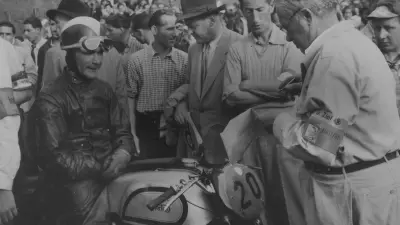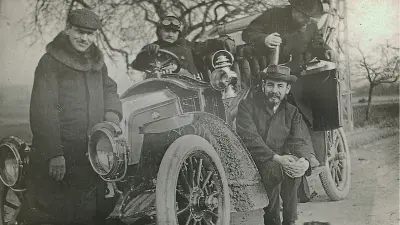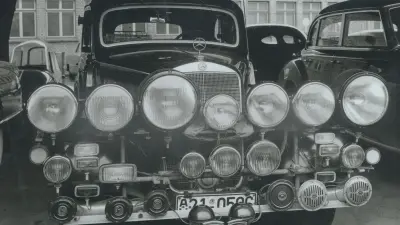Treasures from the Archives
Memories of Mexico

What does a vulture have to do with spark plugs — and with Bosch? The answer is simple: a motor race in autumn 1952.
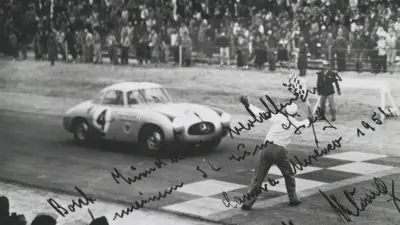
One eyewitness to this story is an object that is easy to miss when looking through the shelves of the Bosch Archives’ spark plug collection: a plexiglass holder with six Bosch W280 spark plugs. The plexiglass holder is inscribed with the following message:
“Third Carrera Panamericana, Mexico, 1952. BOSCH W280T spark plugs … from a Mercedes-Benz 300 SL. Winner: Karl Kling”
The six spark plugs displayed in the plexiglass holder are indeed originals, with slight signs of wear and residue from having been used in the race. They might still even work if you put them in a 1952 300 SL.
What is the story behind these mementos, and how did they end up in the Bosch Archives? What we know is that they were installed in the car that won the 1952 Carrera Panamericana, a Mercedes-Benz 300 SL with gull-wing doors. We suspect that a Bosch racing service associate who supported the race team probably brought them back to Stuttgart after generously replacing the spark plugs with new ones in the winning vehicle — in hindsight, a smart move. Or the race team left them to Bosch for a post-event analysis to gain insights into engineering improvements.
But back to the vulture. The Mexican stretch of the Panamericana, measuring over 3,000 kilometers in length, was completed in 1950. To dedicate this road along the western American coast, a race was held that would go on to become an annual event attracting racing stars from around the world until 1954.
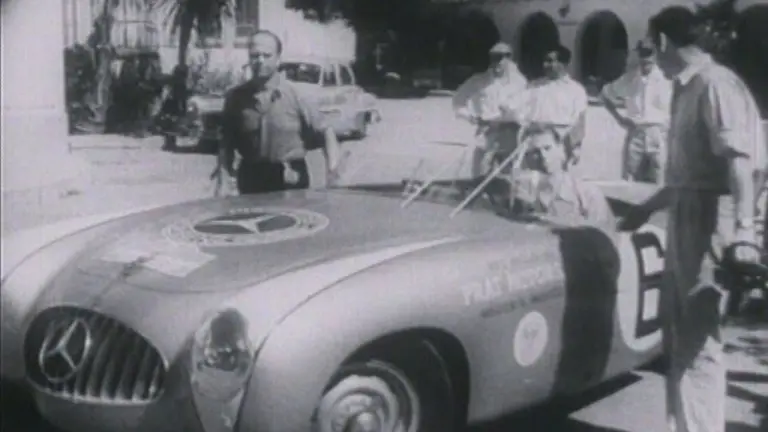
Loading the video requires your consent. If you agree by clicking on the Play icon, the video will load and data will be transmitted to Google as well as information will be accessed and stored by Google on your device. Google may be able to link these data or information with existing data.
During the 1952 race, a vulture collided with the Mercedes 300 SL driven by Karl Kling. The unlucky animal hit the passenger, the racing driver Hans Klenk. Kling’s helper in the race was known for his “prayer book,” in which he constantly noted the route’s details, establishing a common practice among many rally co-drivers. Although Klenk injured his face when the bird flew into the windshield, the two men drove on. To be on the safe side, the car was equipped with a grille in front of the new windshield. This accident was typical for the Carrera Panamericana, which was suspended in 1954 because too many accidents had made it a very dangerous undertaking

Starting around 1900, racing victories with Bosch technology regularly bore witness to the reliability and durability of Bosch components. Even the first advertising campaigns starring the “red devil”, modeled after the racing driver Camille Jenatzy, frequently featured the technology’s successful endurance in racing events as an argument for reliability designed to motivate customers to buy Bosch products — such as spark plugs. In 1952, however, this kind of advertising was no longer absolutely necessary.
By then, the trade press was already testing entire vehicles as well as equipment. Fifty years earlier, perhaps, the company would have proudly presented the spark plugs as “proof” of product quality at trade fairs. Still, the feat was enough in 1952 to make them into a piece of memorabilia harking back to a rather daring adventure.
Author: Dietrich Kuhlgatz

